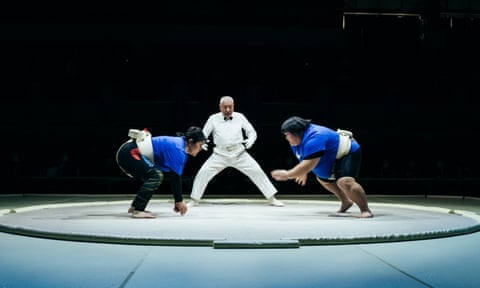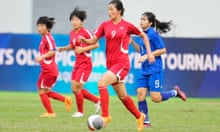Today, gender equality is on everyone’s mind and is a major subject of global debate. Inclusion in sport is no exception. However, many gaps remain. It is little known that sumo is open solely to male professionals. Women are not allowed to be part of this world, and as long as this tradition remains intact, sumo won’t become part of the Olympic Games.


Top: differences between female, left, and male sumo uniforms. Above: Nana Abe, a successful young female amateur wrestler, leads a training session in her local club. Right: a university sumo training session. Female wrestlers believe that fighting with their male counterparts makes them stronger. Far right: Nana and her sister Sakura used to train together
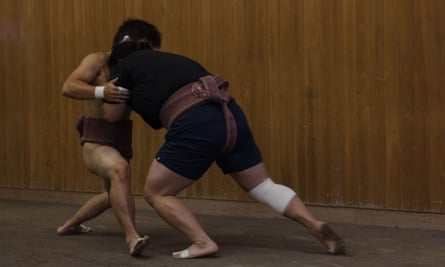
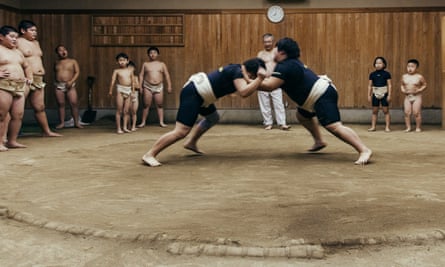
Covered by a thick layer of stereotypes and strong patriarchal beliefs, female sumo in Japan is only accepted on an amateur level. In traditional 大相撲 (ōzumo = big sumo), women are considered impure and cannot step into the ring.
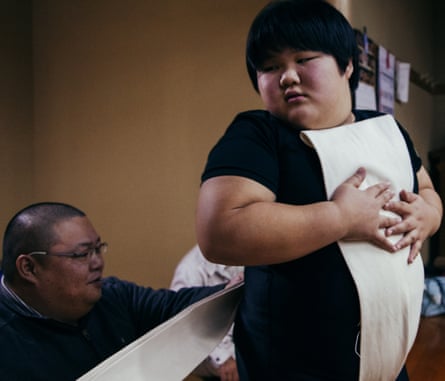
Abe-san learned how to put on the sumo belt – known as a mawashi – when he realised that his daughter was serious about sumo
But female sumo wrestlers do exist and thrive; they are passionate about the sport and give their sweat and tears to prove that they deserve to compete. Sadly, most of these girls will eventually have to give up their efforts and ambitions. Female sumo exists mainly as a school or university club activity, and it is very difficult to continue after graduation. While male wrestlers can earn money by participating in tournaments and advancing their ranks, for women it is almost impossible to make a living out of sumo. Nowadays, female sumo wrestlers in Japan are fighting hard to be heard and to be allowed to practice sumo at a professional level.

Above: a female wrestler is covered with sand after falling in the ring. Right: flipping 100kg tyres is a part of Nana’s daily training

I came across female sumo back in 2018 when I met one of the wrestlers at an event in Tokyo. There, I learned about her struggles. What struck me the most was that even in Japan most people have never even heard that female sumo exists. I felt that I had to share her story through my photography to spread awareness about girls in this sport.
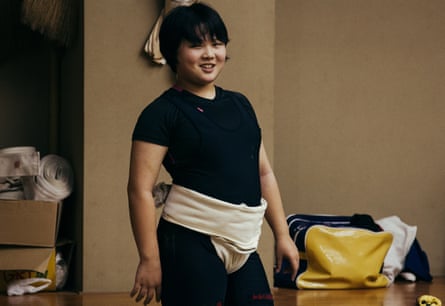
Sakura, Nana’s older sister, had to quit because of an injury. Now she wants to become Nana’s manager
The world of female sumo felt very secretive. It took me almost a year before I managed to obtain permission from the Sumo Federation to photograph some tournaments, but I was lucky to witness some of the first competitions. That’s how I met Nana.
In Tokyo in September 2019, the Female Sumo Federation organised the national Wanpaku sumo (youth tournament) for girls. For the first time in history, young female wrestlers gathered from all over the country. Most of the audience were parents cheering for their kids, but Nana had the biggest support team – a group of people holding posters and flags with her photos and name on them. I heard whispers from other parents: “Oh my god! That’s Nana-chan! No one can beat her!” It was true; Nana was one of the strongest. I couldn’t stop wondering about this strong young woman. A couple of months later, I got a chance to visit her home town and learn about her story.

Nana got into sumo when she was eight years old
Nana became interested in sumo when she was eight years old. The coach saw potential in her, and after a few sessions, she got serious about the sport and decided to work on her body and gain weight that would be ideal for a professional sumo wrestler. Her family said that they would support her if she wanted to pursue the sport. Her father built the ring in their garden and found all the necessary equipment for Nana to practice any time she wants.
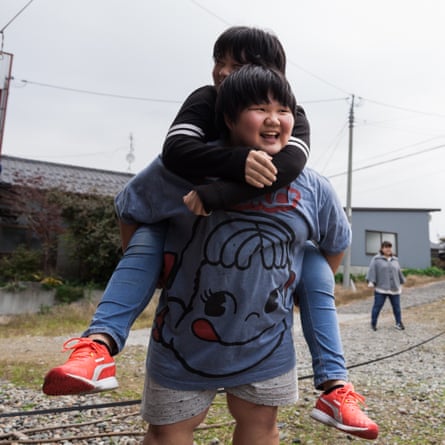
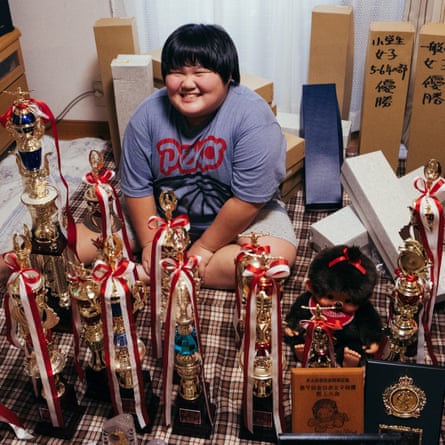


Clockwise from top left: family time for Nana; surrounded by her trophies; with her shiba-inu, Kotaro, who was given to her by a family friend after a sumo victory; Nana and Sakura play before heading to training
The whole family drives long distances all over the country to cheer for Nana at competitions, but many other sumo girls prefer not to discuss their sport with their families. Gender stereotypes are still deeply rooted in Japanese society, and many people, especially those from older generations, believe that sumo is not something a girl should do. This year Nana is turning 15, and she continues to win tournaments and earn new trophies.

A traditional curtain – known as a noren – decorated with handprints of famous sumo wrestlers hangs across the entrance to Nana’s kitchen
Within the last year there have been some significant changes in the world of female sumo – the number of tournaments for women keeps growing, and there are new rings they can access. This gives hope that Nana and other girls will be able to continue their careers even after graduation. However, there are still many gaps to fill.
This photo project has received the International Portfolio Fujifilm award at the Kyotographie festival and will be exhibited at Fujifilm Square gallery in Tokyo from the 27 October 2023.
